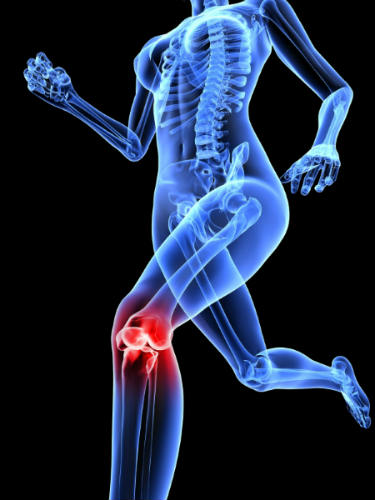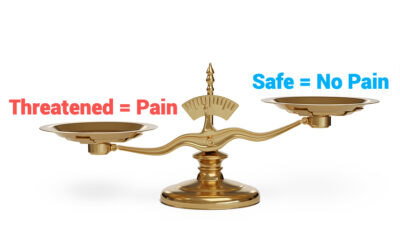“Pain is part of the body’s defense system, producing a reflexive retraction from the painful stimulus, and tendencies to protect the affected body part while it heals, and avoid that harmful situation in the future.”
This is the evolutionary and behavioral role of pain as described on Wikipedia.com. Yet this is not generally how we think of pain. Instead, our view of body pain is more in line with the dictionary.com definition: “A distressing sensation in a particular part of the body.”
What is pain?
If you combine the above, pain is a protective reflex that causes discomfort and anxiety. And that’s a good thing! Clearly, pain prevents us from causing further damage to ourselves by stopping our destructive behaviors.
In other words, pain is a sensation that provides us with information about how our body is functioning. It is a warning sign that something is wrong.
Thus, pain is the body’s last resort mechanism to get our attention. When we feel pain, it means that we’ve ignored the subtle signals our body has given us, such as the the strange feelings in our joints or unusual muscle soreness. So, in order to make us stop and avoid further destruction, the body makes us hurt–a lot.
Like many athletes, I routinely ignored signals from my body, especially when it had messages I didn’t want to hear. I blocked and rationalized the signs so that I could push through the pain. As a result, I ended up paying the price.
Heed the pain or suffer the consequences!
When I started jogging again after my two knee surgeries, my left knee would complain softly and not feel quite right when I was done. It didn’t hurt per se, but it didn’t feel stable or unaffected by the pounding either. Since the discomfort would diminish within a few hours, it was quickly forgotten until the next time I was out on the track.
This cycle would repeat for weeks, the pain gradually intensifying and the recovery lengthening. As long as my knee did “improve” and feel “better,” I continued to run.
In the beginning the “funny” feeling would only happen after activity. As the joint deteriorated, the discomfort would be present from the first stride. Interestingly, my knee pain would lessen the more I trotted. So I rationalized that my knee was warming up, and if it improved as I ran, I couldn’t be doing any permanent damage. Ha! Removal of 80% of frayed cartridge under my kneecap proved me wrong.
Body pain and mental desire are a dangerous combination. The one that wins is the one that talks the loudest. Initially the excitement of jogging again overwhelmed the inconvenience of minor knee pain. With time, the voice of my knee rose from a faint whisper to a pleading, full-lung scream. In my head, I desperately wanted to stay active, pursuing sports to the exclusion of the messages relayed from my body. Propelled by athletic aspirations, I ignored common sense, failed to respect my body and continued pushing when I knew stopping was the right thing to do. Another surgery was my reward for being deaf to my body’s warnings.
No pain, no gain?
Some people believe pain is good and actively seek it out. Think of religious martyrs doing penance. In other words, pain is an inevitable part of life to be expected and accepted. Having pain means you’re alive. As an athlete you may have lived by the words, “No pain, no gain.” You may think that it has to hurt to be good for you. Unfortunately, these flawed societal attitudes towards pain are propagating the chronic pain epidemic.
Not all pain is the same!
Although we may not like the message of pain our body is sending, we can use it to our advantage in healing. One of the hardest things to teach my clients is to objectively evaluate their pain. When we feel pain, the alarm bells go off, and we become afraid and want to flee. If, instead of fearing our pain, we can stay with it and learn to rate and understand it, pain becomes a powerful tool in our recovery.
There are many levels of pain. Unfortunately, we tend to only notice if we have pain or if we don’t, pain or no pain. Using this black-and-white approach to measuring pain, we miss the small improvements. Pain has many shades of gray. The ability to distinguish between these gradations in pain helps us assess our treatment plan. Is what we are doing working or not? If our only criteria for healing is having no pain, we may inaccurately judge our therapy as ineffective.
Small positive changes in the frequency or intensity of pain also gives us hope, which is a powerful emotion in the healing process. Incremental changes in pain levels builds confidence in the body’s restorative abilities and our recovery.
Should you use pain relieving medication?
Like all medical interventions, pain relieving medication has its place but can also be abused. If the pain is so extreme that daily activity is limited, medication is appropriate. Developing a habit of popping an Ibuprofen, Aleve or Tylenol for every ache, however, is not. Dosing the body so you can override its warnings and push through the pain to do something your head has decided you should do is also inappropriate and dangerous.
Masking the pain furthers the disconnect between your body and mind. Instead of running from the pain, be brave and go into the pain. Strive to understand the cause instead of automatically assuming the worst. Develop a curiosity about your pain; refer to my blog: The Most Important Question to Ask About Your Pain.
In a nutshell, pain has a lot to tell you if you’re willing to listen.



